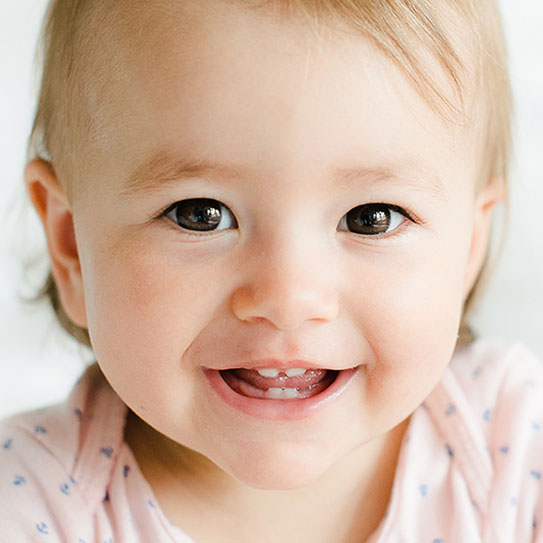AS PARENTS, EVERY milestone a new baby reaches is incredibly exciting, and sometimes we can get impatient and even start worrying long before we should. To get out in front of that tendency, let’s lay out the average schedule of baby teeth development and eruption.
Baby Teeth Development and Eruption
The process of growing teeth (called odontogenesis) begins in week six of pregnancy and continues after the teeth have begun erupting because the roots still have some growing to do. Babies typically get their teeth two by two, starting with the bottom front teeth somewhere between six and ten months old. Next are usually the top front teeth between months eight and twelve. After that, they get their bottom lateral incisors, then the top lateral incisors.
You might expect the canines to be next, but nope! Next up are the lower molars, then the upper molars, and only then is it time for the canines. Completing the set of baby teeth is the second set of molars, which will usually arrive by age three.
What If My Child’s Teeth Are Behind Schedule?
There’s no need to worry if baby teeth seem slow to arrive, but if there still aren’t any by the 18-month mark, a dentist should take a look. No matter whether teeth are early or late, though, bring them to the dentist once the first tooth erupts!
Start Brushing Them As Soon As You See Them!
Teeth need daily brushing even when they’re brand new, and it’s great to start establishing brushing habits early and flossing habits as soon as they have two teeth that touch. If they’re used to the routine, they’ll be more prepared to continue these essential habits themselves for a lifetime of healthy teeth.

